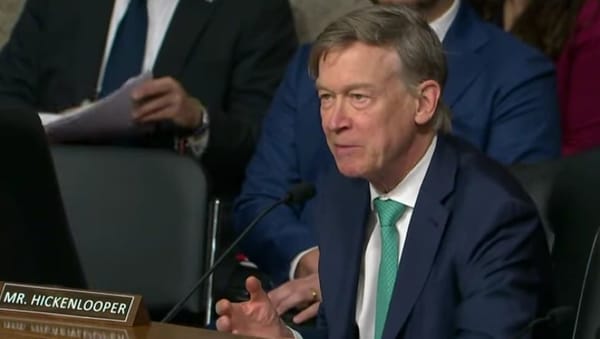Defense Department Report on Sharing 3 GigaHertz Spectrum for 5G Networks
The redacted report details the challenges associated with sharing the lower 3 GHz band with commercial users.
Jericho Casper

WASHINGTON, April 3, 2024 – The Department of Defense on Wednesday unveiled a redacted version of its September report regarding the feasibility of sharing spectrum in the lower 3 GigaHertz (GHz) band, a frequency band that is highly coveted by industry groups for potential use in 5G networks.
The 236-page Emerging Mid-Band Radar Spectrum Sharing Feasibility Assessment Report maintains that sharing the 3.1-3.45 GHz band between federal and commercial systems is currently not feasible “unless certain regulatory, technological, and resourcing conditions are proven and implemented.”

Despite this, the agency does acknowledge the potential of freeing up some of the spectrum for 5G use, emphasizing that in order to make the lower 3 GHz band available for commercial use a "coordination framework must facilitate spectrum sharing in the time, frequency, and geography domains.”
The report also stresses the importance of adhering to a multitude of other prerequisite conditions.
These conditions include ensuring that DoD retains regulatory control, guaranteeing access for testing and experimentation by the Defense Industrial Base, maintaining policies for national emergency preemption, enhancing the dynamic spectrum sharing framework with advanced technology capabilities, accommodating both current and future federal systems equitably, establishing safeguards against interference, and addressing resource requirements as well as information, operational, and cyber security concerns.

According to DoD, these conditions serve as essential safeguards to protect the integrity of spectrum usage and ensure the continued effectiveness of military and commercial operations in frequency bands.
Nevertheless, the report maintains that even if all the conditions are met, spectrum sharing between federal and non-federal users will remain a challenge.
The report cites concerns about adherence to coordination conditions, impacts on airborne systems, and upgrades to various classes of ships that would be required. The complexity of developing a dynamic spectrum sharing capability is highlighted in the report as a significant engineering challenge.
To address these challenges, an event hosted by the Department of Defense at CTIA’s conference center in Washington D.C., aimed at kickstarting discussions with the private sector on implementation strategies is slated for April 8.
DoD said last week it will unveil a new initiative for collaborative spectrum study and experimentation during the event. Efforts within this initiative, which will be coordinated through the National Spectrum Consortium, will examine technical approaches to dynamic spectrum sharing with the goal of building trust among stakeholders and accelerating solution deployment.
CTIA, a major wireless industry trade association, welcomed the development. "We look forward to working with all stakeholders to identify ways to make more spectrum available for full-power, licensed commercial use domestically as soon as possible, while also supporting the needs of our military and national security," wrote Umair Javed, CTIA's vice president of spectrum, in a release.
Representing the Office of the DoD Chief Information Officer, Paul Brooks told LightReading that "DoD is excited to discuss work that is about to begin in support of the National Spectrum Strategy,” adding DoD is “committed to ensuring the US remains at the cutting edge of 5G/NextG technology and fully intends to approach this in a collaborative and transparent way that encourages industry innovation while maintaining critical national security capabilities."
This event comes amid a longstanding dispute between DoD and CTIA over the potential repurposing of spectrum within the 3.1-3.45 GHz, or S-band, for commercial use.
In December, DoD stated that it was currently unable to share spectrum in the 3 GHz band due to the need to relocate government systems to alternative frequencies. Yet, industry groups shot back arguing that the government study of the 3 GHz band completed by the DoD rested on “faulty assumptions” that the band cannot be shared.
CTIA has highlighted multiple studies that show how 5G operates today alongside the same DoD systems that are used domestically. It argues this proves that 5G can operate in the 3.3-3.45 GHz band in the U.S. while fully preserving national security.











Member discussion